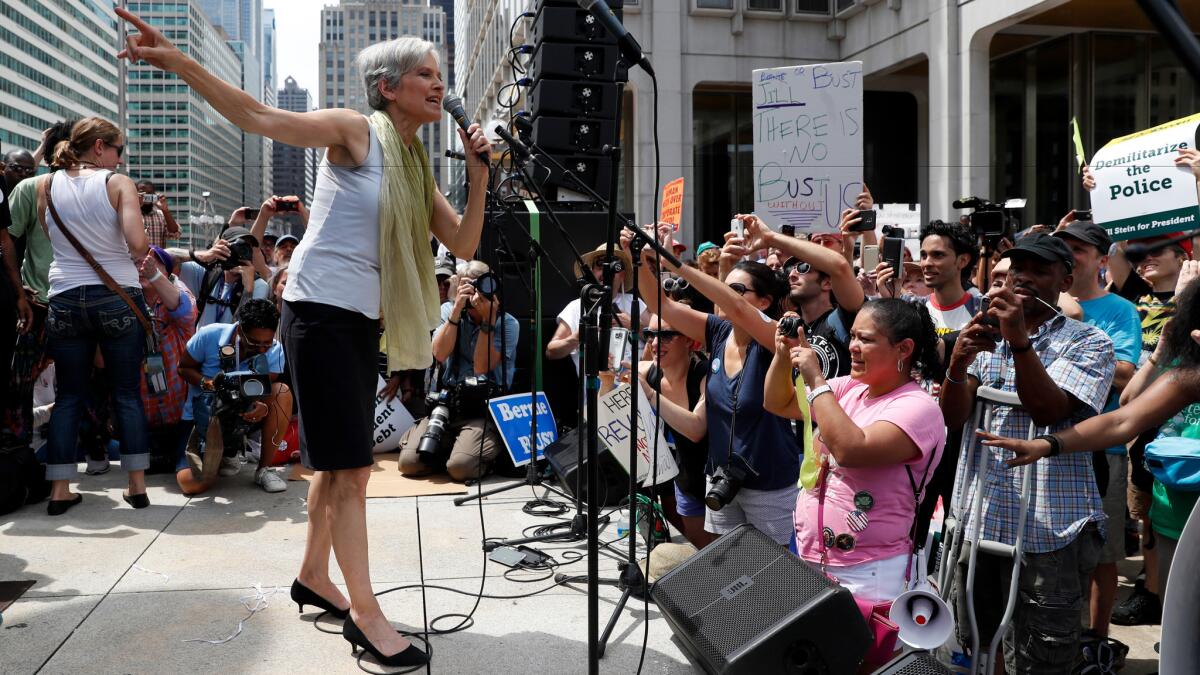Editorial: The presidential debates should include more than two candidates

The Commission on Presidential Debates has scheduled three nationally televised events between now and the November election that seem likely, under its current rules, to be limited to the two major-party candidates, Hillary Clinton and Donald Trump. That would be a disservice to voters, who would not get to hear from several candidates who, although they are long-shots, could conceivably win the presidential race in November. The commission should ease off a bit on its rules by dropping, for at least one debate, the requirement that participants achieve 15% voter support or more in five national public opinion polls.
Dropping the 15% hurdle would give voters a chance to engage with some alternative ideas they might otherwise miss; there’s nothing wrong with that.
The commission currently limits the stage to candidates who meet the 15% threshold and are on the ballot in enough states to be able to collect the 270 electoral votes it takes to win the presidency. But the requirement of mathematical viability strikes us as a sufficient filter to keep the stage from being clogged with distracting fringe candidates who can’t possibly win. Why should candidates who could potentially be elected — and who might gain even more support if they could get their message before voters on a national platform — be barred from participating?
Furthermore, dropping the 15% hurdle would give voters a chance to engage with some alternative ideas they might otherwise miss; there’s nothing wrong with that.
As of now, that would mean adding two lecterns to the stage, giving space to Libertarian nominee Gary Johnson and Green Party nominee Jill Stein. We’re not naive; we understand that neither is likely to garner sufficient support to win any states in November, let alone the majority of electoral college votes. But debates shouldn’t be about anointing winners by omitting competitors; they should be frank exchanges of views on a wide range of subjects exposing the candidates’ poise under pressure.
Additionally, in this era of extreme cynicism about our political processes, expanding the debate lineup could help counter the perception in some quarters that the debate system is rigged (to use a term that has been brought up often in this race) in favor of the two major parties. After all, it was those very two parties which just happened to have been instrumental in creating the debate commission in the first place. Rules that limit participation to Democrats and Republicans, while excluding candidates who have a small-but-not-zero chance of winning might understandably be construed as self-dealing.
There is an argument to be made that including too many candidates could limit the give-and-take between the two candidates in whom voters have shown the most interest, and who have the best chances of winning. But remember that Trump and Clinton have high negatives among voters, many of whom may be searching for an Option C. And expanding the stage for one night serves the better interests of democracy, while still leaving two more debates for the kind of exchanges that can help sharpen voters’ views and perceptions.
Follow the Opinion section on Twitter @latimesopinion and Facebook
More to Read
A cure for the common opinion
Get thought-provoking perspectives with our weekly newsletter.
You may occasionally receive promotional content from the Los Angeles Times.






